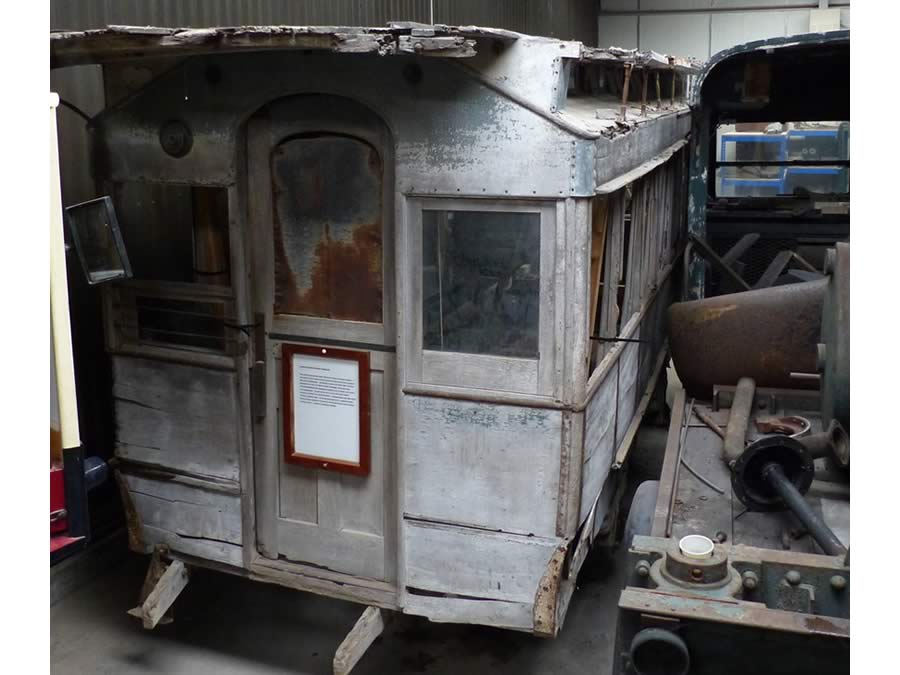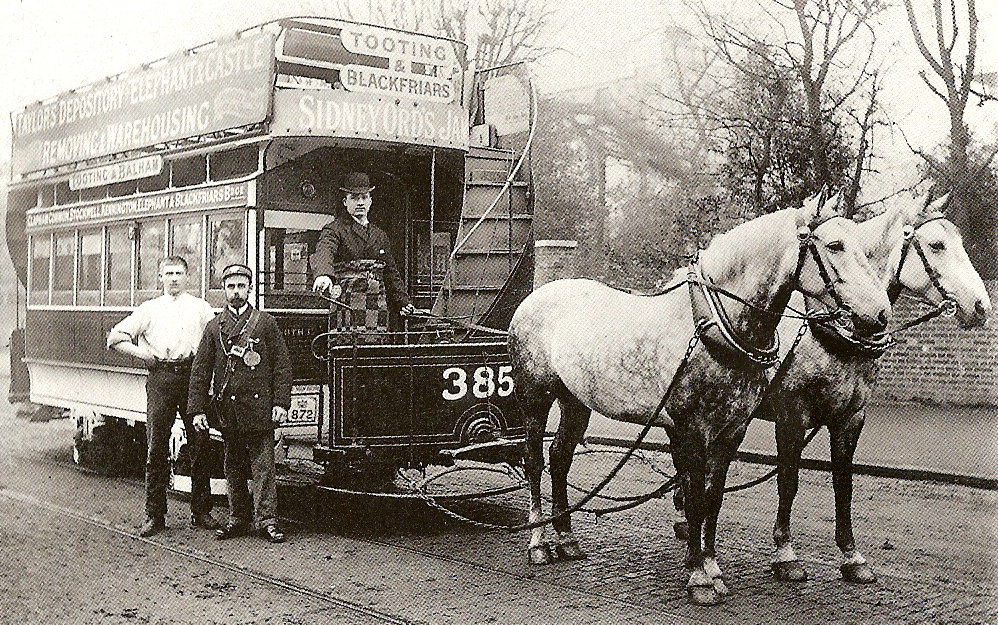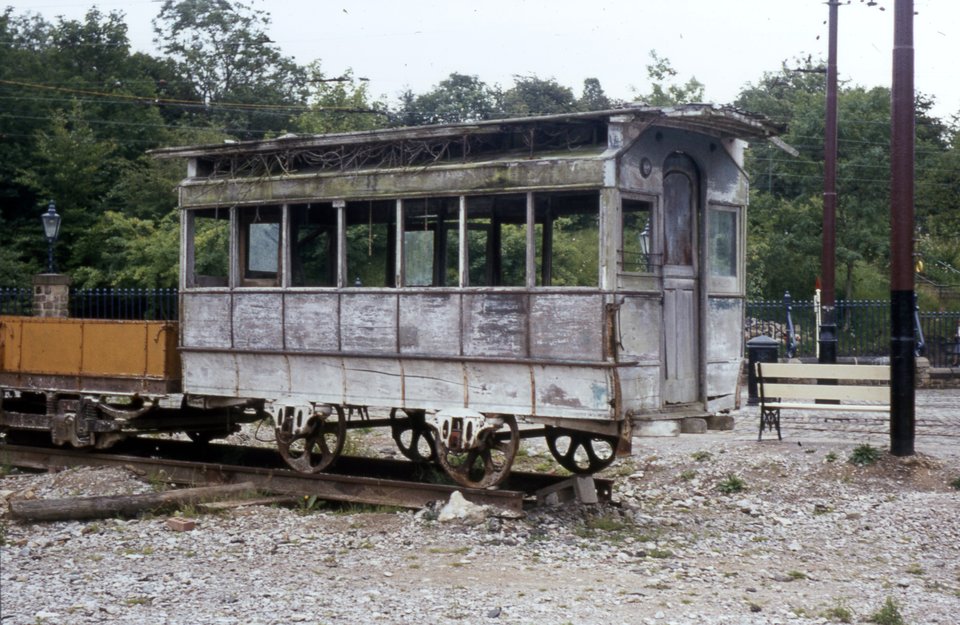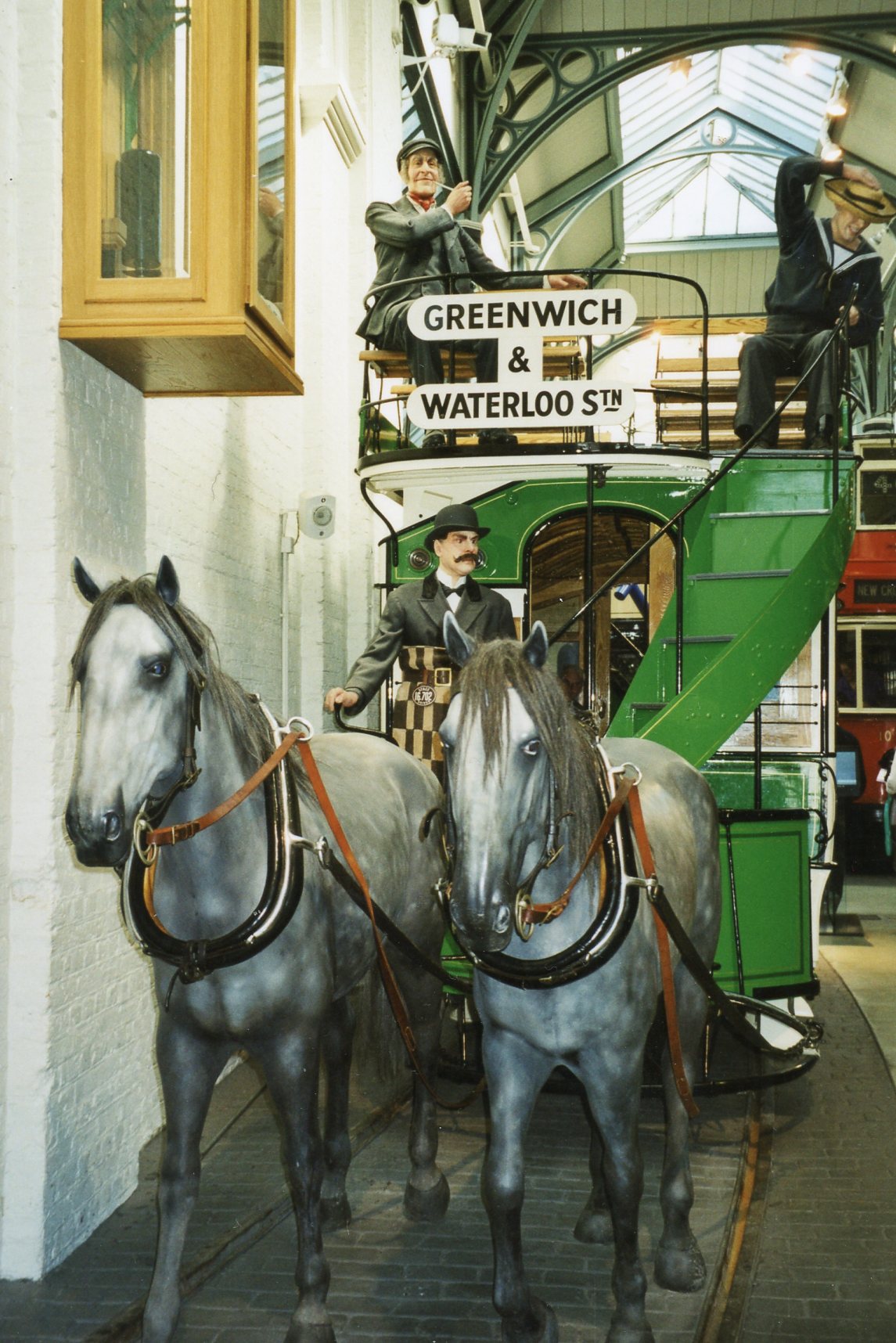London Tramways Company ‘Curry Rivel’ horse tram

Photo: Jim Dignan
From the very earliest days, tramway operators were liable for any damage caused by their employees or the vehicles they operated and this made it important to be able to identify individual tramcars within a fleet of identical looking vehicles. In the absence of vehicle registration plates, which were not introduced until 1903, each tramway operator was obliged by Board of Trade regulations to number every tramcar in the fleet and ensure that this number was conspicuously displayed on both the inside and outside of the vehicle.
These numbers also enabled operators to keep service and maintenance records etc for each of their tramcars and they are of considerable interest to tramcar preservationists since they usually make it possible to trace the history of each tram from the moment of its inauguration to its ultimate demise or escape into preservation.
Fortunately, fleet numbers are generally quite durable and traces often remain even after the original number has been painted over, though confusion can be caused when tramcars were renumbered or (as in the case of MBRO 84) when vehicles were given a new lease of life by cannibalising parts of decommissioned trams; or when existing tramcars were effectively rebuilt and issued with a new number.
Just occasionally, however, tramcars are found in such a dilapidated condition that it is impossible to ascertain the original fleet number. One such tramcar was the lower saloon of a double deck horse tram that was found in 1984 in a garden in the Somerset village of Curry Rivel.
Specification
- Type of tram
- Double deck open-topped horse tram
- Livery
- Unknown
- Seating capacity
- 46 (22 on the upper deck and 24 in the saloon)
- Date built
- 1895
- Manufacturer of body
- London Tramways Co. (built to a design by John Stephenson & Co. of New York)
- Manufacturer of truck
- Trunnion
- Gauge
- 4’ 8½”
- Motor
- N/A
- Controller
- N/A
- Current collector
- N/A
- Modification
Not known.
- Withdrawn from service
1905
- Subsequent history
Lower saloon complete with running gear purchased by a local vicar, who moved it to his garden; the remains accompanied him when he was moved to a parish in Somerset.
- Restoration history
Remains removed to Crich in 1984 and exhibited for many years outdoors in unrestored condition. Following the acquisition of Leamington & Warwick 1, the remains were removed to the museum’s off-site storage facility in 2005.
- Current status
- Unrestored. In long-term storage pending a decision on its future.
- Date started operating at Crich
- N/A
- Total mileage covered at Crich
- N/A
- Current location
- Off-site storage facility
- 1885 – 1905Operational on original tramway
- 1905 – 1984Dismantled and converted into garden shed or similar
- 1984 – 1993Exhibited on depot fan in unrestored state
- 1993 – 2005In depots at Crich
- 2005 – In long-term storage



